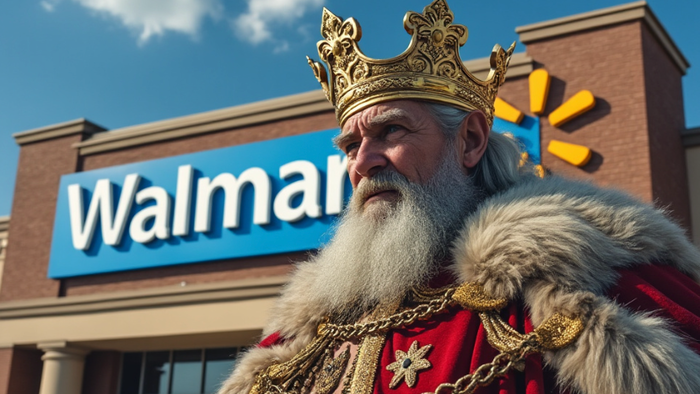As U.S. consumers navigate an unprecedented financial landscape characterized by soaring credit card debt and diminished personal savings, the trend toward “trade-down” behavior has emerged prominently. This phenomenon, where both affluent and lower-income households seek bargains, is reshaping shopping habits across various retail sectors. Amidst these economic constraints, big-box retailers have found themselves at the forefront of attracting this shifting consumer behavior. Analysts from Goldman Sachs have highlighted Walmart’s position as a leader in providing the best grocery deals, specifically when compared to competitors like Sprouts Farmers Market, Whole Foods, and Dollar General. As households prioritize budget-conscious shopping, Walmart has proven to be the go-to destination for those seeking affordability during financially precarious times.
Recent reports from Walmart underscore the retailer’s success through this turbulent economic climate. In a major release, the company reported earnings for the third quarter that exceeded expectations, marking the third consecutive quarter of improved guidance. This positive financial performance is noteworthy not only for Walmart but also signals a broader trend in consumer purchasing behaviors. Shoppers across various income levels are increasingly gravitating toward Walmart in search of competitive pricing on essential goods, reflecting a wider retail landscape that is sensitive to economic pressures. The data suggests that upper-income households, particularly those earning $100,000 or more, are also engaging in trade-down behaviors, opting for big-box shopping experiences that promise more for less.
These shifts in consumer spending patterns provide an illuminating glimpse into the motivations behind the current retail climate. As financial pressures mount, promotional strategies and competitive pricing have become critical components for retailers. Walmart’s ability to consistently deliver attractive pricing has not only bolstered its own financial success but also positioned it as a benchmark against which other retailers are measured. Moreover, the growing interest from wealthier consumers further enhances the significance of this trade-down trend, as it indicates a possible recalibration of spending habits that prioritize value over brand loyalty.
The implications of this trade-down trend extend beyond individual retailers to the broader economy. Increased engagement from high-income households at budget-friendly retailers like Walmart suggests a shift in purchasing priorities, resulting from intense inflation and economic uncertainty. The fact that consumers across varying demographics are consciously choosing to prioritize lower prices could signal a more profound transformation in the retail landscape, likely impacting supply chains and the competitive dynamics among retailers. As households adjust their purchasing strategies in response to their financial circumstances, retailers must adapt to capture these changing consumer preferences effectively.
This evolving consumer mentality not only affects retailers’ sales strategies but also impacts the types of products being offered. With an emphasis on value, big-box retailers like Walmart are increasingly likely to enhance their inventory to include a more extensive range of affordable brands and products, catering to those looking for cost savings. This strategy can also lead to the development of private label products, appealing to consumers who want to save without sacrificing quality. If Walmart and other retailers continue to prioritize and respond to the demands of cost-conscious shoppers, we could see a stronger trend toward store-brand equivalents, potentially altering traditional brand dynamics.
In summary, the current trade-down phenomenon in U.S. retail reflects the significant impact of economic pressures on consumer behavior. Amidst rising credit card debt and declining savings, the preference for value-driven shopping has propelled big-box retailers like Walmart to the forefront, attracting a diverse range of customers seeking the best deals. Walmart’s sustained competitive pricing and recent financial successes indicate that this trend is likely to continue, posing both challenges and opportunities for retailers. As consumers adapt to changing financial circumstances, the landscape of retail is poised for a transformation, with value and affordability becoming increasingly prioritized in the quest for better deals.

